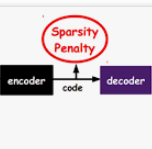
During social interactions, people use auditory, visual, and haptic cues to convey their thoughts, emotions, and intentions. Due to weight, energy, and other hardware constraints, it is difficult to create devices that completely capture the complexity of human touch. Here we explore whether a sparse representation of human touch is sufficient to convey social touch signals. To test this we collected a dataset of social touch interactions using a soft wearable pressure sensor array, developed an algorithm to map recorded data to an array of actuators, then applied our algorithm to create signals that drive an array of normal indentation actuators placed on the arm. Using this wearable, low-resolution, low-force device, we find that users are able to distinguish the intended social meaning, and compare performance to results based on direct human touch. As online communication becomes more prevalent, such systems to convey haptic signals could allow for improved distant socializing and empathetic remote human-human interaction.
翻译:在社会互动中,人们使用听觉、视觉和偶然的提示来表达他们的想法、情感和意图。由于重量、能量和其他硬件的限制,很难创建完全捕捉人类触碰复杂性的装置。在这里,我们探索人类触碰的微弱表现是否足以传递社会触碰信号。为了测试这一点,我们用软磨损压力感应阵列收集了社会触碰互动的数据集,开发了将记录的数据映射到一系列动因的算法,然后应用了我们的算法来生成信号,驱动放置在手臂上的一系列正常的缩放动因。我们发现用户能够区分预期的社会意义,并将性能与直接触碰的结果进行比较。随着在线通信变得更加普遍,这种传递随机信号的系统可以改进遥远的社会化和亲近的远程人类互动。



